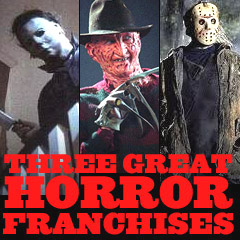
|
"Friday the 13th" "A Nightmare on Elm Street" |
Many of the more successful horror films, including Halloween (1978), Friday the 13th (1980), and A Nightmare on Elm Street (1984) spawned inferior, low-budget, sickening slasher, 'schlock' or 'splatter' films in the 80s (and 90s and beyond). Most of these sequels or imitators were exploitative and featured shock, gory violence, graphic horror, 'teens in peril,' computer-generated special effects and makeup, and usually a homicidal male psycho who committed a progressive string of gruesome murders on female victims (where brutal killing/slashing/hacking metaphorically substituted for a rape). Many of these films told tales of a vengeful murderer motivated by some past misdeed or sexual perversity. See also: 100 Greatest Horror Films of All-Time |
The "Halloween" Films: (1978-2022) Director John Carpenter's influential, and acclaimed independent-sleeper horror classic Halloween (1978) with a creepy soundtrack brought about the modern slasher movie. It featured the iconic character of Michael Myers - a deranged, masked, threatening knife-wielding killer of teenage babysitters, notably Laurie Strode (Jamie Lee Curtis in her debut film, the daughter of Janet Leigh who had earlier starred as the 'scream queen' in Hitchcock's Psycho). Myers had returned to his old neighborhood of Haddonfield, Illinois after an escape from a mental institution. His spooky doctor Sam Loomis (British horror actor Donald Pleasence, and later portrayed by Malcolm McDowell) pursued the mad slasher as the masked killer wreaked havoc and menace. [Note: The mask was actually a costume store William Shatner-like faceplate, turned inside out and painted white. Makeup artist David Ayres reshaped the look-alike mask of Star Trek's Captain Kirk into Michael Myers' facial camouflage.] The film brought about the Puritanical cliched notion that promiscuous, sex-loving teenagers were marked for death. This popular slasher, serial killer film inspired numerous, mostly inferior sequels - a total of13 films by the year 2022. The only film in the series without Michael Myers was the third installment in 1982. Halloween's series of 13 films (from 1978-2022) grossed $624 million domestically. The highest-grossing of the series was the recent remake-installment Halloween (2018), a true sequel to the original film, earning $159.3 million (domestic). It also became the highest-grossing slasher film of all-time. It brought back actress Jamie Lee Curtis 40 years later as an aging, twice-divorced Laurie Strode who was suffering from alcoholism and agoraphobia. |
 Halloween (1978) |
 Halloween II (1981) |
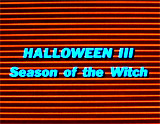 Halloween III: Season of the Witch (1982) |
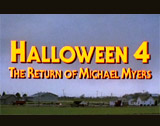 Halloween 4: The Return of Michael Myers (1988) |
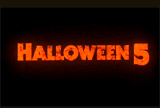 Halloween 5: The Revenge of Michael Myers (1989) |
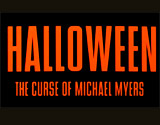 Halloween 6: The Curse of Michael Myers (1995) |
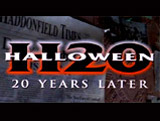 Halloween H20: Twenty Years Later (1998) |
 Halloween: Resurrection (2002) |
 Halloween (2007) |
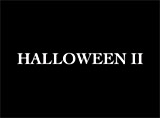 Halloween II (2009) |
 Halloween (2018) |
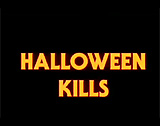 Halloween Kills (2021) |
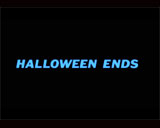 Halloween Ends (2022) |
|||
The "Friday the 13th" Films: (1980-2009) Friday the 13th (1980), one of the first of the horror genre's most recognizable horror series, produced an astonishing number of sequels. It ripped off more original films of the 70s (such as director Mario Bava's definitive R-rated slasher/gore film A Bay of Blood (1971, It.)) with tales of terrorized teen camp counselors. Jason Voorhees, like the psychopathic Freddy Krueger after him in the A Nightmare on Elm Street series, became a landmark name, although the machete-wielding maniac in the original film wasn't Jason, but his vengeful mother Pamela (Betsy Palmer). She was seeking revenge for the drowning of her son at summer camp at Crystal Lake when sexually-promiscuous camp counselors neglected their duties. Although Pamela was beheaded in the film's climax, her son miraculously survived and lurked in the camp's woods - seeking further retaliation on sexually-active coeds in later sequels. He went from wearing a one-eyed pillow-case to a white, grimy plastic hockey mask, when he became more indestructible. Friday the 14th, Part 3 (1982) was the first film to feature the killer "Jason" in his signature plastic, grimy hockey mask (a Detroit Red Wings goalie mask). By 2009, there were a total of 12 installments in the franchise (this included the 2003 hybrid). Various locales for the films ranged from the woodsy lake-side Camp Crystal Lake, to Manhattan, to outer space in Jason X (2001). Friday the 13th's (from 1980-2009) series of 12 films grossed $381 million (domestic). |
The "A Nightmare on Elm Street" Films: (1984-2010) Director Wes Craven began his career in violent horror films in the 70s, with the low-budget rape-revenge shocker The Last House on the Left (1972) (a re-tooling of Ingmar Bergman's The Virgin Spring (1960)) and The Hills Have Eyes (1977). His career-defining film was the first of nine slasher flicks, opening with A Nightmare on Elm Street (1984). It introduced the scary character of Freddy Krueger (Robert Englund), a re-incarnated, sadistic child molester and serial killer with razor-fingered gloves and a burn-scarred face. Years earlier, the local child killer had faced parental vigilantes in the town of Springwood, Ohio after escaping justice on a legal technicality, and been burned to death in a basement furnace. The premise was that the children of his persecutors -- grown-up teens (Heather Langenkamp, Amanda Wyss, and Johnny Depp in his feature film debut, among others) living on Elm Street who fell asleep would experience the nightmare of Freddy's returning presence, who had emerged from Hell to haunt them. The films in the Nightmare on Elm Street series (through 2010) included nine films (one was a hybrid). Craven returned to direct the sequel Wes Craven's New Nightmare (1994), the 7th film in the series, with original star Heather Langenkamp, Craven himself, and Robert Englund all playing themselves. A Nightmare on Elm Street's (from 1984-2010) series of 9 films grossed $370.5 million (domestic). |